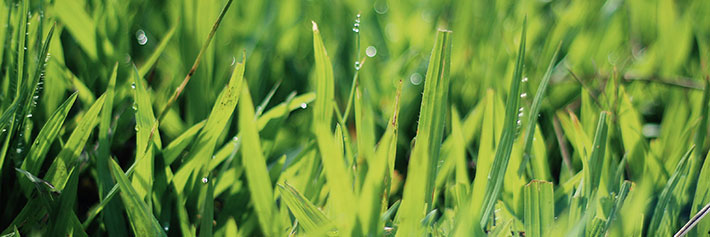Many people often approach lawn care with the attitude of “how hard can it be?” The trouble is, if you don’t know what you are doing and/or you don’t have the right equipment, instead of being the proud owner of a lush green lawn that draws regular compliments from your neighbors, you could end up with a yellow colored patch of grass that’s considered the neighborhood eyesore. As a dedicated lawn mower reviewing website, we are committed to helping you find the best lawn care equipment that works best for you and your lawn. Since we have been providing residential and commercial lawn care reviewing services for a number of years and have seen just about every mistake that there is. Here are a few of the top ones that you should avoid when maintaining your lawn.

Cutting Your Grass Too Short
We’ve all seen bowling greens, and we’ve all wished that our own lawns could look the same, or at least similar. Apart from being perfectly level, the main thing you notice about the grass on a bowling green is how short it is and how this improves the aesthetic appeal of it. Besides the fact that you probably don’t have access to the same kind of lawn care equipment that is used to create this finish (usually ultra expensive cylinder style lawn mowers), attempting to cut your lawn as short as you possibly can is usually harmful to its health. The general rule is that you should never cut lower than a third of the total length. If you do, your lawn will look much more susceptible to weeds, won’t be able to deal well with dry spells and could by damaged by the sun’s rays.
Using a Blunt Blade to Mow Your Lawn
No matter what type of lawn mower you use, it’s essential that it has a sharp blade that cuts cleanly through the grass. Many gardeners don’t properly maintain their lawn care tools, and when using a blunt blade, the grass is effectively ripped rather than cut. This causes a considerable amount of damage to its tissue structure and leaves it vulnerable to a number of diseases. When choosing a new lawn mower, there are essentially two different blade types you can choose from; cylinder and rotary. While lawn mowers fitted with rotary blades are much more common, any professional in the lawn care business will tell you that cylinder blades are the better option in terms of maintaining a healthy lawn. Why? The cutting technique produces a far cleaner cut. Essentially, it’s like cutting each blade of grass with a pair of scissors. You might not be surprised to hear that most cylinder style lower mowers are generally significantly more expensive than many of the rotary models available.
Watering your Lawn A LOT
Just like humans, or any other animal in fact, your grass needs water regularly to be able to survive. Did you know that roughly three quarters of the weight of your grass is purely water? You might think that many lawns become unsightly due to the property owners failing to water them often enough, but actually the condition of many lawns deteriorates because of the opposite — overwatering. And overwatering is all too easy these days, with modern sprinkler systems being run around the clock. This not only wastes a great deal of water, which is not exactly environmentally friendly, but it can also encourage things like weed growth. The exact amount of water that you should provide your lawn with depends on a variety of factors, including:
- The species of grass that you have
- The soil type that you have
- Your local climate
Then there’s the different seasons to consider. As the seasons change, the amount of water you provide your lawn with should be amended. As a general rule of thumb though, a lawn requires one inch of water each week to sustain itself and remain in good health.
Applying the WRONG Type of Fertilizer in the WRONG Amounts at the WRONG Times
As you can probably guess from the title, people mess up with fertilizers in a whole number of different ways. The end goal when applying a fertilizer to your lawn is to encourage growth on the top layer, but growth of the roots should not be affected by this, otherwise the health of the lawn will suffer. Fertilizers contain a number of different nutrients, but the main ones are:
- Nitrogen– Responsible for the lush green color that everyone wants, and stimulates grass blade growth. Some forms of fertilizer release nitrogen quicker than others
- Phosphorous– Required in larger amounts by newly laid lawns, this nutrient is needed by grass’s energy transfer systems.
- Potassium– Potassium plays an important role in helping the grass to stave off diseases, damage caused by insects and other environmental factors.
Our Lawn Mower Reviewing experts would advise you to source a fertilizer that releases roughly 50% of its nitrogen supply slowly. Popular ratios of the nutrients mentioned above (Nitrogen-Phosphorous-Potassium) are 4-1-2 and 3-1-2. One of the biggest mistakes people make with fertilizers is applying too much, which can cause too much growth of the grass blades at the expense of the root systems. Our advice is to always follow the directions on the packaging carefully, using as little fertilizer as you can to achieve the desired results.
The other common mistake that is easily made with fertilizers is applying them at the wrong time of year. The main thing to remember is that the fertilizer will have the greatest impact if applied during a period of active growth. For lawns in Eugene, this means fertilizing at the start of the spring period, before easing off as temperatures rise. It’s also not a bad idea to then apply some more fertilizer as temperatures start to drop again towards the end of summer, as this often sets your lawn up well for the following year.
When it comes to Reviewing Law Equipment, we take great pride in educating consumers on the best Lawn Care Products in the industry and should you require any further help or advice, we would be glad to assist you.


Leave a Reply